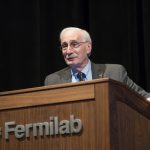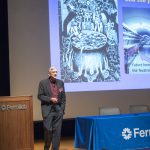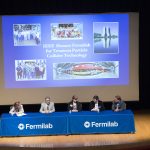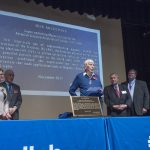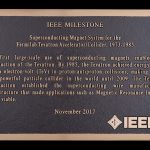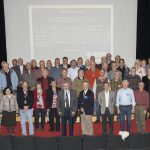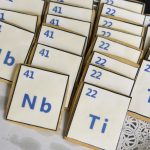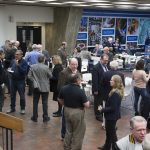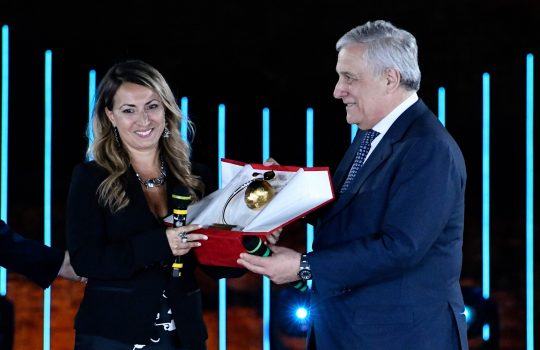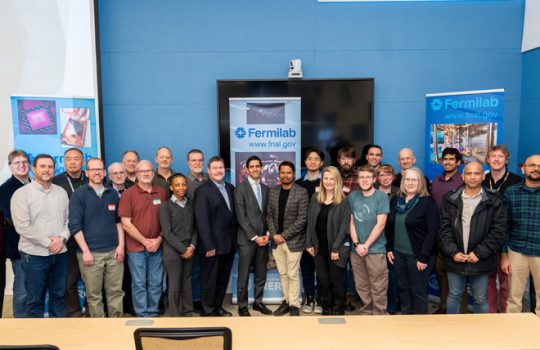Fun fact: In 1974, when Fermilab was just starting construction of the Energy Doubler accelerator — later named the Tevatron — the laboratory made the initial purchase of what would amount to “95 percent of all the niobium-titanium ever produced since the beginning of time” (see Judy Jackson’s 1993 Beam Line article “Down to the Wire“).
The lion’s share of the world’s niobium-titanium production went into a machine that scientists would use to probe the origins of the universe. The ambitious scientific mission called for a high-volume order of niobium-titanium — the initial order was for 15,000 pounds — which would end up as components in the Tevatron’s 774 superconducting magnets.
It was unprecedented demand for an unprecedented project, and it resulted in the kind of science-driven surge of industrial production that’s testament to the beneficial relationship between fundamental and applied research. The design of the Tevatron drove the commercial production of superconducting wire and cable, creating an industry that would soon push the placement of MRI machines in the world’s hospitals.
On Nov. 13, the Institute for Electrical and Electronics Engineers, or IEEE, paid tribute at Fermilab to the technological innovations driven by the Tevatron and awarded the laboratory a prestigious IEEE Milestone Award for the development of the accelerator’s superconducting magnets.
An afternoon symposium comprised talks from experts in the field of superconducting materials, particle accelerators and medical imaging, and a panel discussion on the future of superconducting magnets and accelerators in science.
The tribute concluded with the presentation of the IEEE Milestone Award plaque, which read:
The first large-scale use of superconducting magnets enabled the construction of the Tevatron. By 1985, the Tevatron achieved energy above 1 Tera electron-volt (TeV) in proton-antiproton collisions, making it the most powerful particle collider in the world until 2009. The Tevatron construction established the superconducting wire manufacturing infrastructure that made applications such as Magnetic Resonance Imaging (MRI) viable.
“I firmly believe that MRI would have developed much more slowly, or maybe not even been successful, without the work that was done here at the Tevatron first,” said Kathleen Amm of GE.
“The very filaments we had in the Rutherford cables for the Tevatron magnets actually helped us to make magnets internally at GE,” Amm said.
The design of the superconducting magnets for the Tevatron have also had a far-reaching impact on accelerators for science, with the design of special magnet collars becoming part of “the DNA of every accelerator magnet since then,” noted IEEE Council on Superconductivity President and Department of Energy official Bruce Strauss.
The U.S. DOE and its precursor agencies supported the Tevatron at Fermilab. DOE Fermi Site Office Manager Mike Weis likened the way the Tevatron elevated superconducting wire and cable production to the role of Babe Ruth in baseball.
“Prior to 1919, the New York Yankees had never won anything. And then they acquired Babe Ruth,” Weis said. “Once we were able to get the Tevatron to get to those higher energy levels with that investment and that technology development, we are now always going to refer back to the Tevatron as having this greatness, just like we refer back to Babe Ruth. Everyone knows who Babe Ruth is.”
The market today for medical and industrial accelerators exceeds $2.2 billion.
“Past, present and future … the benefit of accelerators has not just been about science. It has also had a significant impact on the economy, and on society through health, energy and security,” said University of Chicago Executive Vice President for Research, Innovation and National Laboratories Eric D. Isaacs.
“You think about what the cost of the Tevatron was, and it’s been repaid many, many, many times over in the MRI industry,” Amm said. “And all of that return, I think, traces back to the fact that we had magnets, we had conductor developed here.”
She added, “The impact of the Tevatron continues forward in to the future.”
Fermilab is America’s premier national laboratory for particle physics and accelerator research. A U.S. Department of Energy Office of Science laboratory, Fermilab is located near Chicago, Illinois, and operated under contract by the Fermi Research Alliance LLC, a joint partnership between the University of Chicago and the Universities Research Association, Inc. Visit Fermilab’s website at www.fnal.gov and follow us on Twitter at @Fermilab.
The DOE Office of Science is the single largest supporter of basic research in the physical sciences in the United States and is working to address some of the most pressing challenges of our time. For more information, please visit science.energy.gov.

